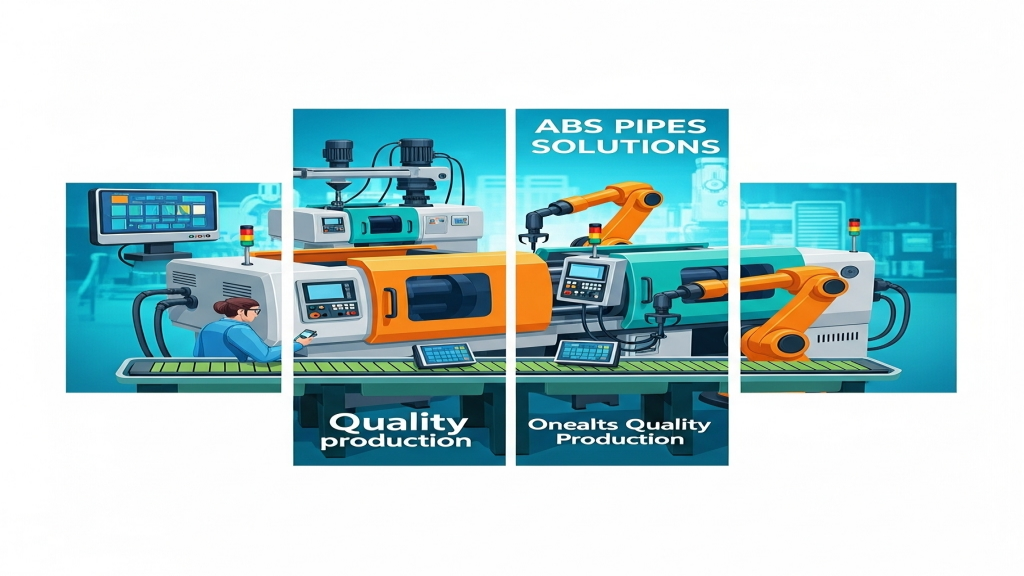
High-density polyethylene (HDPE), with its high strength and corrosion resistance, is an ideal material for blow molding. Blow molding, as an efficient manufacturing process for hollow products, complements the advantages of HDPE. This combination enables HDPE blow molding to be widely used in many fields.
However, the application of HDPE blow molding extends far beyond this. The diversity of products it manufactures is rooted in the versatility of HDPE material itself. Next, we will delve into the specific applications of HDPE blow molding in different industries.
What blow-molded products are HDPE's properties suitable for?

HDPE's chemical inertness, high strength-to-weight ratio, and excellent impact resistance give it a unique advantage in blow molding. These key properties directly determine which types of products can be manufactured efficiently and reliably using this process.
- Excellent Moldability: Good melt strength and ductility ensure that HDPE is easy to form complex shapes during blow molding.
- Stable Physical Properties: Rapid cooling and setting, along with high rigidity, allow blow-molded HDPE products to solidify quickly and maintain structural strength.
- Excellent Chemical Resistance: Excellent chemical corrosion resistance gives HDPE blow-molded products a wide range of applications, especially in liquid storage.
- Economical and Efficient Production: High cost-effectiveness and ease of processing make HDPE blow molding an economical and practical choice for mass production.
What common daily necessities are made by HDPE blow molding?

In our daily lives, many of the plastic bottles and containers we see everywhere are "masterpieces" of HDPE blow molding. The ingenious design of these products often cleverly utilizes the properties of HDPE to meet different usage needs.
- Daily-Use Bottles and Cans: HDPE's chemical resistance and ease of molding make it widely used in bottles and cans for toiletries, food, and cleaning products.
- Household Containers: HDPE's robustness, durability, and impact resistance make it an ideal choice for manufacturing household containers such as trash cans and buckets.
- Children's Toys: HDPE's non-toxicity, lightweight, and plasticity make it commonly used in the production of various brightly colored hollow toys.
- Industrial Containers: HDPE's excellent oil and chemical corrosion resistance makes it important in industrial fields such as automobile fuel tanks and chemical containers.
In which fields does HDPE blow molding have significant applications?

HDPE blow molding is not limited to the daily necessities we are familiar with; it also plays a crucial role in specialized fields such as industry, agriculture, and medicine. Addressing the specific needs of these fields, HDPE blow-molded products often have more stringent performance requirements.
- Robust and Durable Industrial Applications: HDPE blow molding is used in the industrial sector to manufacture high-strength, corrosion-resistant storage tanks, fuel tanks, and pipelines.
-Weather-Resistant and Practical Agricultural Solutions: HDPE blow molding provides agriculture with weather-resistant and flexible films, as well as corrosion-resistant containers. - Safe and Reliable Medical Supplies: In the medical field, HDPE blow molding produces biocompatible and well-sealed medicine bottles and device components.
Product applicability and performance requirements
| Application Field | Typical Products | Key Performance Requirements (Focus) |
|---|---|---|
| Industrial | Chemical Storage Tanks, Automotive Fuel Tanks | High Strength, Chemical Resistance, Sealing Property |
| Agriculture | Agricultural Films, Pesticide Containers | Weather Resistance, Flexibility (Films), Chemical Resistance (Containers) |
| Medical | Medicine Bottles, Diagnostic Reagent Containers | Biocompatibility, Sealing Property, Chemical Resistance |
| Daily Consumer Goods | Personal Care Bottles, Food Packaging | Easy Molding, Chemical Resistance, Lightweight |
What are the advantages of using HDPE blow molding for product manufacturing?
HDPE blow molding demonstrates several unique advantages when producing specific products. It can efficiently manufacture hollow products with complex shapes, such as various bottles, cans, and containers, at a relatively low cost, making it particularly suitable for mass production. The excellent properties of HDPE material itself, such as good chemical corrosion resistance, high strength-to-weight ratio, and ease of coloring, also give products a wider range of applications and a better user experience.
1.Efficient Molding of Complex Hollow Parts: The blow molding process excels at manufacturing hollow products with varying shapes.
2.Economical and Efficient Mass Production: Blow molding has low costs and is suitable for large-scale production.
3.High Material Utilization Rate, Reducing Waste: Blow molding effectively utilizes materials and is easy to recycle.
4.Lightweight and Durable Product Characteristics: HDPE blow-molded products are lightweight and possess certain strength and durability.
Conclusion
As a mature and important plastic processing technology, HDPE blow molding will continue to shine in various fields with its applicability and advantages, providing convenience and support for our lives and industrial production.
For expert assistance in implementing for your production needs, visit our resource center or contact us. Let’s help you scale up your manufacturing with precision and efficiency!







